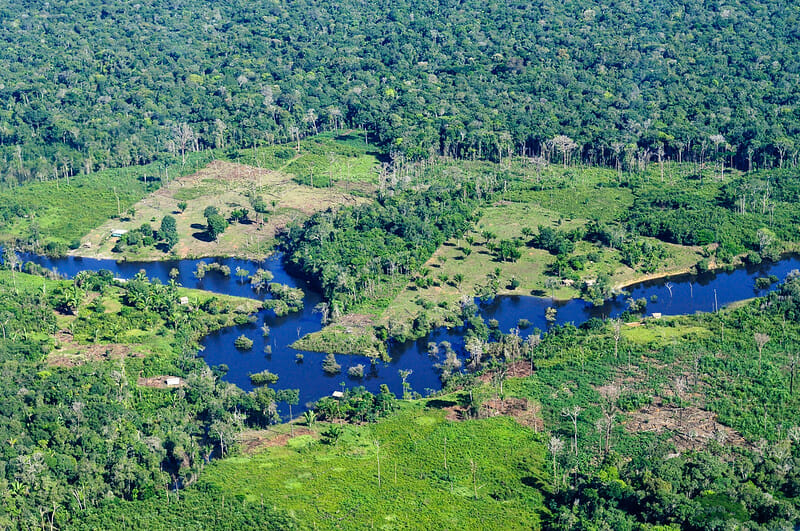Since taking office in 2019, Brazilian President Jair Bolsonaro’s deforestation policies have led to the systematic destruction of forests to expand agricultural lands in the name of bolstering the national economy. His latest measure, a proposed railway system named Ferrograo, will construct a 1,000km train line directly through the heart of the Amazon rainforest.
Originally developed by a business consortium in 2012, the Ferrograo railway system is currently incorporated into the Brazilian National Logistics Plan to be constructed by 2025. The railway has been promoted by Bolsonaro as a solution for Brazil’s agricultural industry issues — currently, grains produced in the nation’s midwest region such as soybeans must travel over 2,000km to reach populated seaport areas including Sao Paulo.
The Ferrograo, or “grain railway,” has a $4.12 billion budget, and would increase the competitiveness of these goods in international and Brazilian markets by 8%, whilst also reducing transportation costs.
The Amazon is ours… no country in the world has the moral right to talk about the Amazon. You destroyed your own ecosystems.
— Brazilian President Jair Bolsonaro, 2019
However, these measures entail huge amounts of deforestation and add to the rainforest’s already rising emissions production. In conjunction with the railway, construction projects will also be encouraged to be developed on land around the proposed train line. According to research conducted by the Climate Policy Initiative, construction of Ferrograo will result in up to 2,043 square ft (around 285,000 football pitches) of deforestation, whilst producing over 75 million tonnes of carbon emissions.
The planned railway line will pass within 500 metres of 726 official environmentally protected areas. The proposal’s environmental impact study found that Ferrograo construction would cause fragmentation of habitats and ecosystems and contaminate water. The deforestation would also directly impact areas that host 14 species at risk of extinction, as well as affecting indiegnous peoples in the Amazon rainforest.
Related Articles: 10 Major Companies Responsible for Deforestation | The War Against Deforestation | Five Steps To Save The Amazon From Deadly Investments
The Ferrograo railway system is a continuation of Bolsonaro’s deforestation policies. The president has previously claimed that deforestation claims made by his own government’s satellite monitoring agency were “lies”. Yet in 2019, Bolsonaro’s inaugural year as President, deforestation of the Amazon rainforest grew by 85%.
The destruction that the railway plans will bring to the Amazon rainforest comes at a dire time for the future of the world’s largest rainforest. A study led by the National Institute for Space Research in Brazil revealed earlier this year that, for the first recorded time, the Amazon rainforest is emitting more carbon emissions into the atmosphere than it is able to absorb.
The forest is no longer growing faster than it’s dying. This is bad – having the most productive carbon absorber on the planet switch from a sink to a source means we have to eliminate fossil fuels faster than we thought.
— Professor Scott Dening, Colorado State University
One of the causes for the rise in emissions stems from deliberate fire setting, intended to clear land for beef and soy production. Warmer temperatures and increased droughts in the region have further exacerbated the issue.
The Amazon’s shift away from being a sink to a source of emissions is a stark warning on the urgency of global climate action. The Amazon has experienced up to 15% deforestation, and research suggests that a 20-25% loss could result in a decisive collapse of the Amazon’s ecosystem. The proposed construction of the Ferrograo railway serves to illustrate the backwards direction that Brazil appears to be taking on sustainability in the Amazon rainforest, prioritising economic gains over aiding biodiversity and climate action.
Editor’s Note: The opinions expressed here by Impakter.com columnists are their own, not those of Impakter.com. — In the Featured Photo: Amazon Rainforest Deforestation. Featured Photo Credit: Neil Palmer/CIAT.








